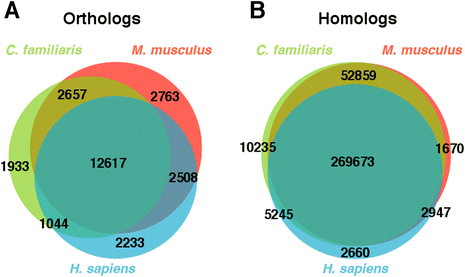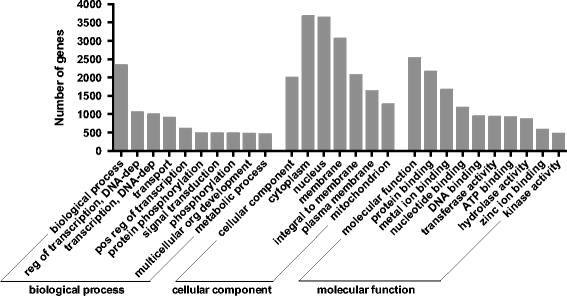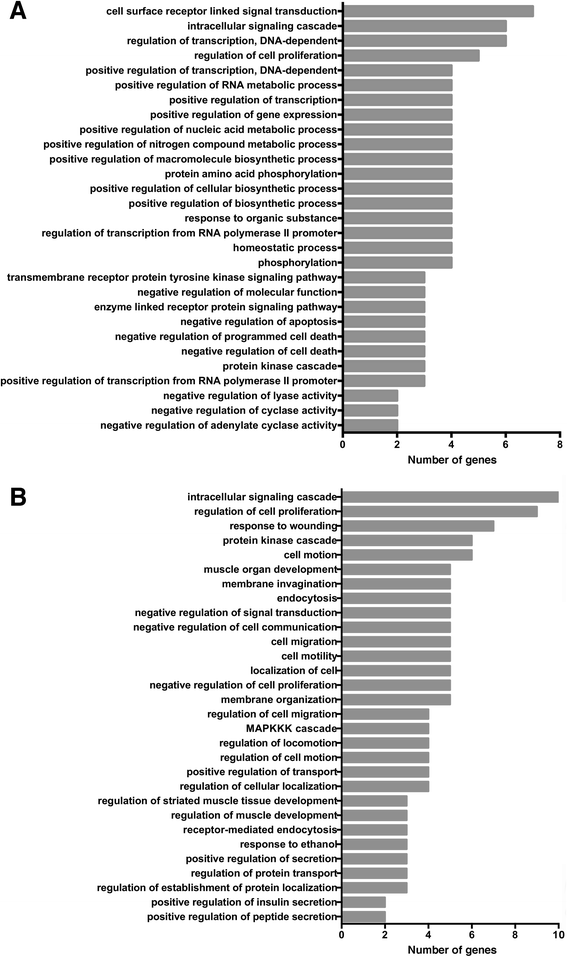Transcriptome analysis of northern elephant seal (Mirounga angustirostris) muscle tissue provides a novel molecular resource and physiological insights
- PMID: 25758323
- PMCID: PMC4328371
- DOI: 10.1186/s12864-015-1253-6
Transcriptome analysis of northern elephant seal (Mirounga angustirostris) muscle tissue provides a novel molecular resource and physiological insights
Abstract
Background: The northern elephant seal, Mirounga angustirostris, is a valuable animal model of fasting adaptation and hypoxic stress tolerance. However, no reference sequence is currently available for this and many other marine mammal study systems, hindering molecular understanding of marine adaptations and unique physiology.
Results: We sequenced a transcriptome of M. angustirostris derived from muscle sampled during an acute stress challenge experiment to identify species-specific markers of stress axis activation and recovery. De novo assembly generated 164,966 contigs and a total of 522,699 transcripts, of which 68.70% were annotated using mouse, human, and domestic dog reference protein sequences. To reduce transcript redundancy, we removed highly similar isoforms in large gene families and produced a filtered assembly containing 336,657 transcripts. We found that a large number of annotated genes are associated with metabolic signaling, immune and stress responses, and muscle function. Preliminary differential expression analysis suggests a limited transcriptional response to acute stress involving alterations in metabolic and immune pathways and muscle tissue maintenance, potentially driven by early response transcription factors such as Cebpd.
Conclusions: We present the first reference sequence for Mirounga angustirostris produced by RNA sequencing of muscle tissue and cloud-based de novo transcriptome assembly. We annotated 395,102 transcripts, some of which may be novel isoforms, and have identified thousands of genes involved in key physiological processes. This resource provides elephant seal-specific gene sequences, complementing existing metabolite and protein expression studies and enabling future work on molecular pathways regulating adaptations such as fasting, hypoxia, and environmental stress responses in marine mammals.
Figures





Similar articles
-
Muscle transcriptome response to ACTH administration in a free-ranging marine mammal.Physiol Genomics. 2015 Aug;47(8):318-30. doi: 10.1152/physiolgenomics.00030.2015. Epub 2015 Jun 2. Physiol Genomics. 2015. PMID: 26038394 Free PMC article.
-
Oxidative stress in northern elephant seals: Integration of omics approaches with ecological and experimental studies.Comp Biochem Physiol A Mol Integr Physiol. 2016 Oct;200:94-103. doi: 10.1016/j.cbpa.2016.02.011. Epub 2016 Feb 26. Comp Biochem Physiol A Mol Integr Physiol. 2016. PMID: 26924792
-
Adipose transcriptome analysis provides novel insights into molecular regulation of prolonged fasting in northern elephant seal pups.Physiol Genomics. 2018 Jul 1;50(7):495-503. doi: 10.1152/physiolgenomics.00002.2018. Epub 2018 Apr 6. Physiol Genomics. 2018. PMID: 29625017 Free PMC article.
-
Adiposity and fat metabolism during combined fasting and lactation in elephant seals.J Exp Biol. 2018 Mar 7;221(Pt Suppl 1):jeb161554. doi: 10.1242/jeb.161554. J Exp Biol. 2018. PMID: 29514892 Review.
-
A non-traditional model of the metabolic syndrome: the adaptive significance of insulin resistance in fasting-adapted seals.Front Endocrinol (Lausanne). 2013 Nov 1;4:164. doi: 10.3389/fendo.2013.00164. Front Endocrinol (Lausanne). 2013. PMID: 24198811 Free PMC article. Review.
Cited by
-
Comprehensive Stress-Based De Novo Transcriptome Assembly and Annotation of Guar (Cyamopsis tetragonoloba (L.) Taub.): An Important Industrial and Forage Crop.Int J Genomics. 2019 Oct 8;2019:7295859. doi: 10.1155/2019/7295859. eCollection 2019. Int J Genomics. 2019. PMID: 31687376 Free PMC article.
-
Blubber transcriptome response to acute stress axis activation involves transient changes in adipogenesis and lipolysis in a fasting-adapted marine mammal.Sci Rep. 2017 Feb 10;7:42110. doi: 10.1038/srep42110. Sci Rep. 2017. PMID: 28186107 Free PMC article.
-
Blubber transcriptome responses to repeated ACTH administration in a marine mammal.Sci Rep. 2019 Feb 25;9(1):2718. doi: 10.1038/s41598-019-39089-2. Sci Rep. 2019. PMID: 30804370 Free PMC article.
-
Muscle transcriptome response to ACTH administration in a free-ranging marine mammal.Physiol Genomics. 2015 Aug;47(8):318-30. doi: 10.1152/physiolgenomics.00030.2015. Epub 2015 Jun 2. Physiol Genomics. 2015. PMID: 26038394 Free PMC article.
-
Transcriptome analysis of sika deer in China.Mol Genet Genomics. 2016 Oct;291(5):1941-53. doi: 10.1007/s00438-016-1231-y. Epub 2016 Jul 16. Mol Genet Genomics. 2016. PMID: 27423230
References
-
- Johnson SC, Browman HI, Hoffmann GE, Place SP, Dupont S, Wilson K, et al. Introducing genomics, proteomics and metabolomics in marine ecology. Mar Ecol Prog Ser. 2007;332:247–8.
Publication types
MeSH terms
Grants and funding
LinkOut - more resources
Full Text Sources
Other Literature Sources

